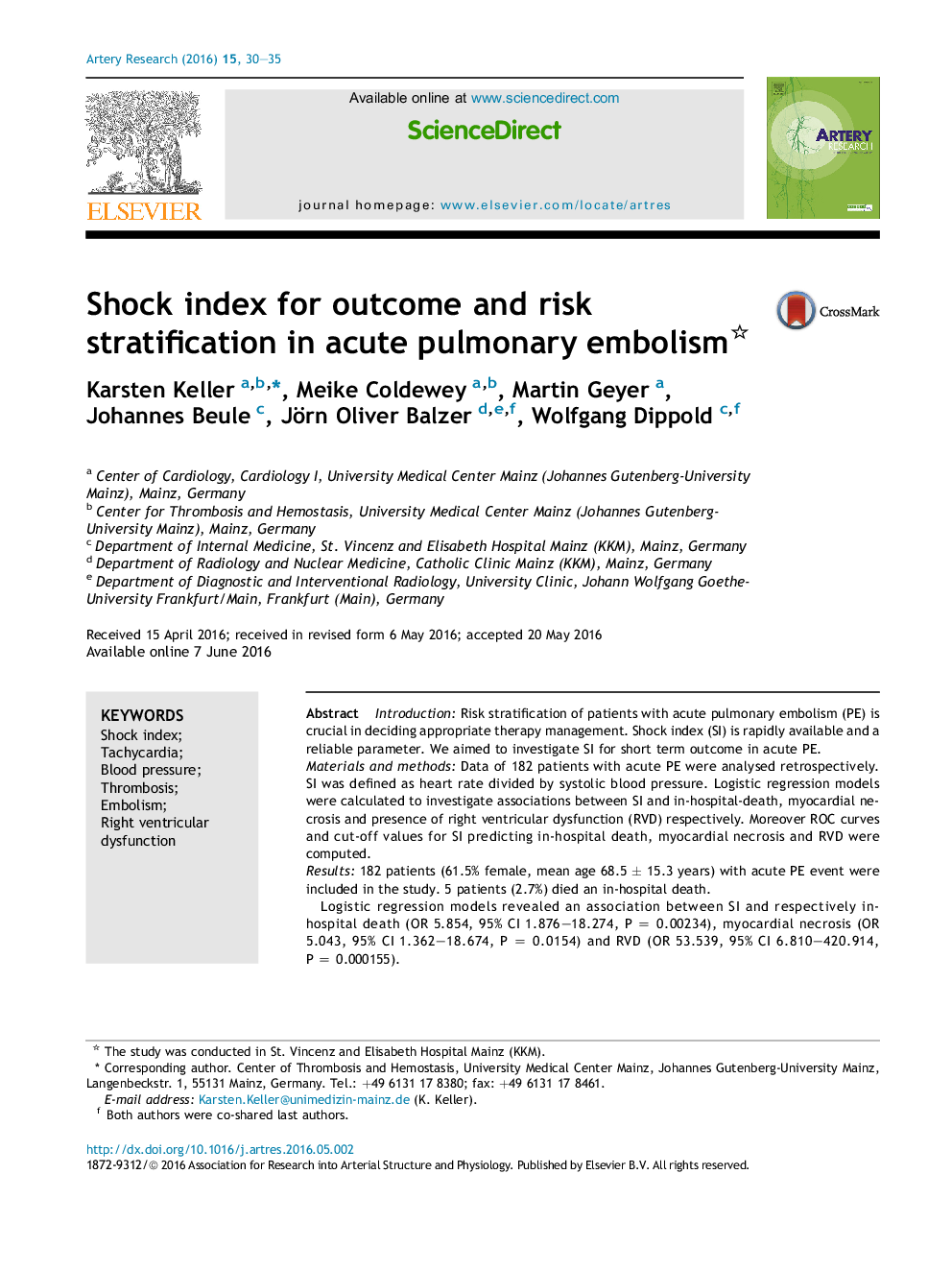| Article ID | Journal | Published Year | Pages | File Type |
|---|---|---|---|---|
| 2891357 | Artery Research | 2016 | 6 Pages |
•Risk stratification in PE is crucial for deciding appropriate therapy.•Shock index is a rapidly available and reliable parameter.•Shock index is a significant predictor for in-hospital death and RVD in PE.•Effectiveness of shock index to predict in-hospital death is good.•Optimal cut-off for shock index to predict in-hospital death in PE is 0.89
IntroductionRisk stratification of patients with acute pulmonary embolism (PE) is crucial in deciding appropriate therapy management. Shock index (SI) is rapidly available and a reliable parameter. We aimed to investigate SI for short term outcome in acute PE.Materials and methodsData of 182 patients with acute PE were analysed retrospectively. SI was defined as heart rate divided by systolic blood pressure. Logistic regression models were calculated to investigate associations between SI and in-hospital-death, myocardial necrosis and presence of right ventricular dysfunction (RVD) respectively. Moreover ROC curves and cut-off values for SI predicting in-hospital death, myocardial necrosis and RVD were computed.Results182 patients (61.5% female, mean age 68.5 ± 15.3 years) with acute PE event were included in the study. 5 patients (2.7%) died an in-hospital death.Logistic regression models revealed an association between SI and respectively in-hospital death (OR 5.854, 95% CI 1.876–18.274, P = 0.00234), myocardial necrosis (OR 5.043, 95% CI 1.362–18.674, P = 0.0154) and RVD (OR 53.539, 95% CI 6.810–420.914, P = 0.000155).ROC analysis for SI predicting in-hospital death, myocardial necrosis and RVD revealed an AUC of 0.806, 0.636 and 0.713 respectively with respectively SI cut-off values of 0.89, 0.75 and 0.54.ConclusionsSI is a significant predictor of in-hospital death, myocardial necrosis and RVD. The effectiveness of SI to predict in-hospital death is high with an optimal cut-off value of 0.89 for differentiation between PE patients with lower and higher risk to die in hospital after acute PE event.
